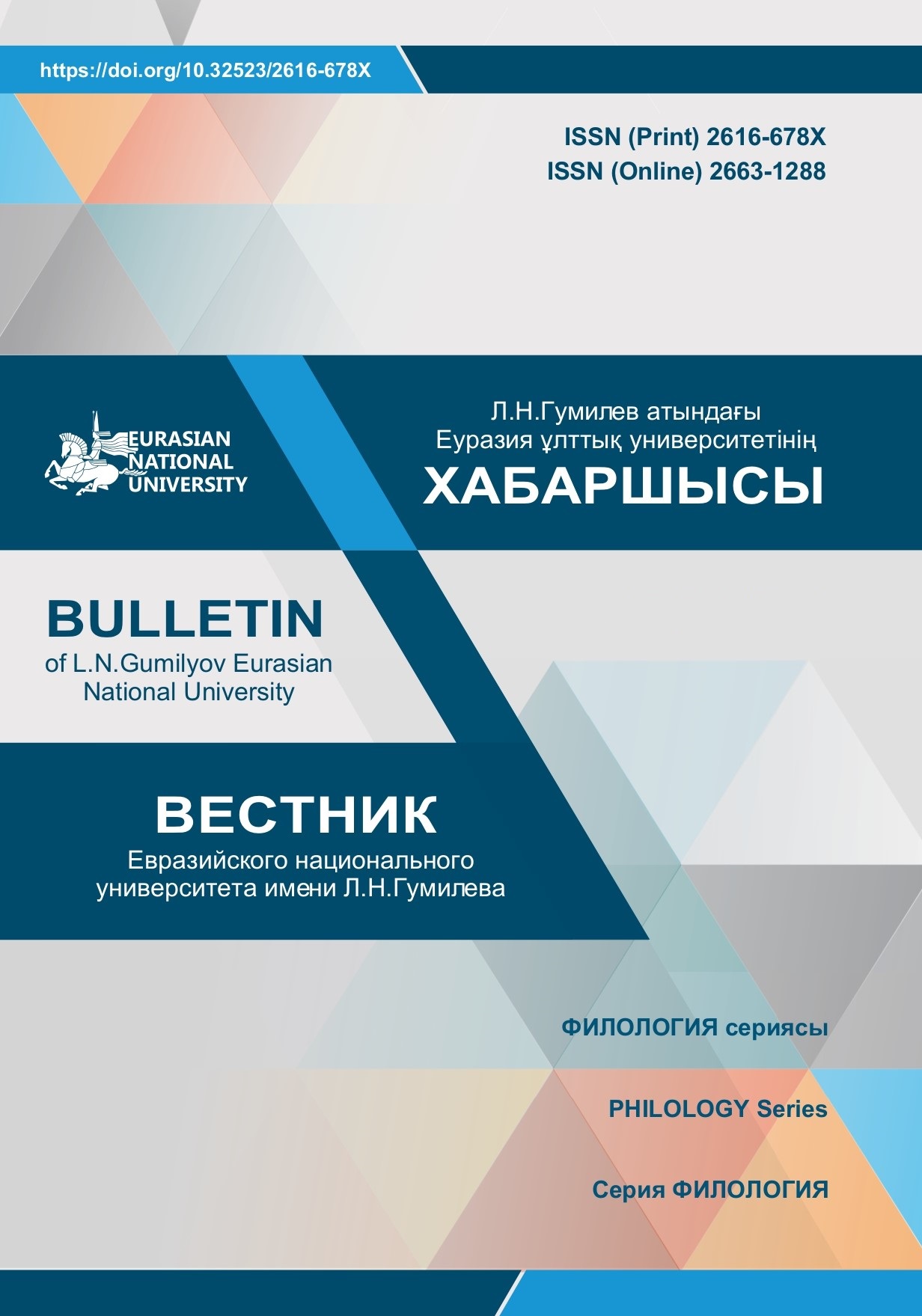Frame analysis of stylistic devices in literary text interpretation
Views: 212 / PDF downloads: 266
DOI:
https://doi.org/10.32523/2616-678X-2020-133-4-114-122Keywords:
traditional stylistics analysis, understanding, cognitive approach, knowledge structures, frame, frame analysisAbstract
The purpose of the article is to substantiate the thesis that the use of cognitive methods
of analyzing stylistic devices, along with traditional ones, is the most effective approach in
the process of interpreting literary texts. Until recently, the study of stylistic techniques was
conducted in accordance with the traditional style, which not always led to the coverage of all their
functions and aspects. The processes of understanding a text cannot be limited only to the study of
the surface structures of language units and require the involvement of cognitive operations and
activation of deep knowledge structures. The article presents a number of examples of analyzing
metaphors from literary texts that combine the methods of component, contextual analysis with
cognitive frame analysis. Frame analysis defines the knowledge structures embedded in stylistic
techniques, the sequential decoding of which significantly expands the integral conceptual
meaning of a literary work and more accurately reveals the author’s intent. This approach allows
us to get into the deep semantics of stylistic units and reveal their conceptual meanings more
widely. Consequently, by engaging in cognitive actions, the highest degree of understanding of
the text is achieved in the process of its interpretation.







